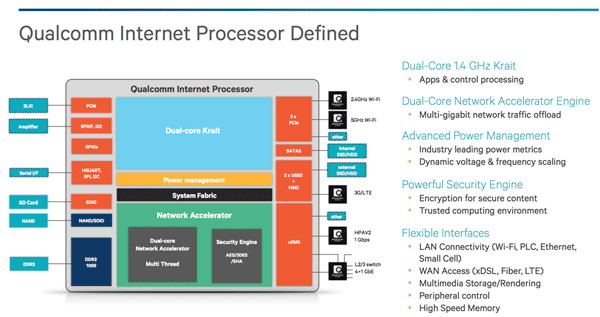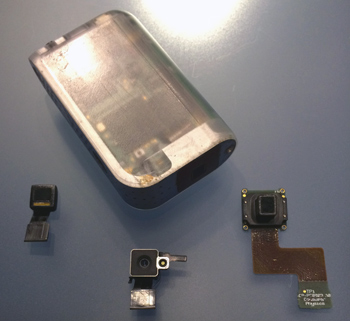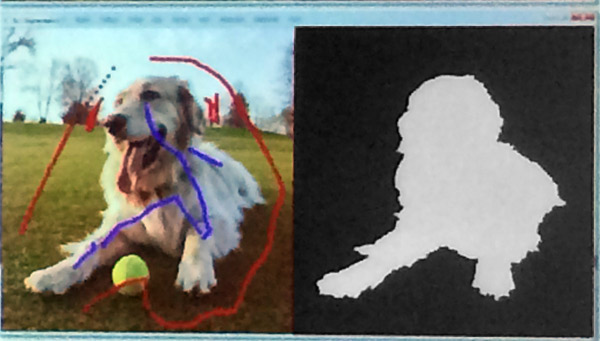More Impressive Tech From Qualcomm Uplinq 2014
With the Internet of Things, Qualcomm sees great potential powering growth in both the abundance and intelligence of devices at the network edge.
Our first day coverage of Qualcomm's Uplinq developer's conference highlighted some of the exciting technologies fueling the growth of intelligent devices at the network edge, but there were many more interesting projects on display.
Smart Gateway
The Smart Gateway platform by Qualcomm Atheros prepares the home network for the Internet of Things. The hardware layer employs the IPQ8064 processor consisting of a dual-core 1.4 GHz Krait 300 CPU for running apps and services and a dual-core 730 MHz Packet Processor Engine for offloading network traffic. Built on a 28 nm process, the IPQ processor achieves further power efficiency gains by dynamically scaling clock frequency to meet network demands. Security is enhanced by Krait's Trustzone and secure boot features.
The operating system for the Smart Gateway is based on OpenWRT, a popular Linux distribution geared specifically towards home routers. Qualcomm's QSDK gives third party app developers the tools to easily develop additional apps or services, like antivirus, intrusion detection or the ability to remotely monitor cameras connected to the home network. Another example is predictive caching of Internet content, which Akamai is currently developing.
As more devices are added to our home networks, bandwidth optimization becomes crucial to the overall user experience. Bigfoot Networks began working on this issue many years ago. After being acquired by Qualcomm Atheros in 2011, development continued, and the technology is now called StreamBoost. By performing a statistical analysis on the pattern of packets passing through the router, StreamBoost is able to fingerprint different streams of traffic and even specific apps responsible for that traffic. These fingerprints are frequently updated via the cloud, and specific bandwidth usage and priorities are set for each application or class of traffic. This technique doesn't allow a single prioritized app to degrade network access for lower priority traffic as traditional QoS solutions do.
AllJoyn, initially developed by Qualcomm, is another service that can run on the Smart Gateway and provides an open source hardware- and OS-agnostic framework for the Internet of Everything. Similar in scope to Apple's HomeKit, it provides a common language for devices on the edge of the network, from cars to lightbulbs, to communicate.
Mantis Vision Aquila 3D Tablet And MV4D
Mantis Vision was showing off the Aquila 3D tablet running the Snapdragon 801 SoC, an OEM-ready reference design available by the end of the year. Leveraging Qualcomm's Vuforia Smart Terrain feature, Mantis' MV4D technology uses an infrared strobe flash to project a structured light pattern onto a scene, while an Omnivision OV9714 camera (capable of capturing 720p video at 60 fps or 480p at 120 fps) captures depth information.
This method, in conjunction with an optional color camera (in this case a 13MP Sony IMX135), creates a colored 3D point cloud in real-time. Ditching the turntable required by some 3D scanning technologies, MV4D creates full 360-degree 3D models without requiring any specific scanning pattern. It's even possible to build a model by linking together separate devices viewing an object from different angles. Once the model is created, it can be manipulated just like a 3D object in a game, opening the door to many possibilities. The MV4D SDK is available for developers, and the imaging technology is showcased in Google's Project Tango tablet.
Get Tom's Hardware's best news and in-depth reviews, straight to your inbox.
Consumer Physics SCiO Spectrometer
Another interesting technology is Consumer Physics' small, affordable spectrometer. The sensor is about the same size as a typical smartphone camera and can determine the chemical composition of just about any material. Scanned items are cataloged in the cloud, becoming a search engine for chemical fingerprints. Uses include determining the freshness or nutritional information of foods, identifying unmarked medication and measuring the hydration level of plants.
The third-generation device, called SCiO, was successfully funded on Kickstarter and is expected to ship in March 2015. Work continues on reducing the size and cost of the sensor so that it may one day fit into a smartphone.
Miscellaneous
One of the other noteworthy items were Qualcomm reference tablets running Snapdragon 805 SoCs and sporting 4k screens. (They appeared to be 10-inch displays). The Qualcomm representative was optimistic that we will see 4k screens in tablets sometime in 2015.
Qualcomm was also showing off the impressive image processing effects available in its camera API. A new feature that will be available in October 2014 is Image Segmentation, which allows the user to interactively separate a foreground object from the background. This is accomplished not by tracing the outline of the object, which is difficult to do with your finger on a small touchscreen, but by drawing simple lines over the objects. Algorithms then take over and intelligently find the edges of the object. Once the object is separated from the background, any number of effects can be applied, like selectively lightening or darkening the scene, swapping backgrounds, or even adding parallax effects.
Qualcomm's Uplinq 2014 conference showcased some exciting technologies that we can make use of today and provided a glimpse into the near future, demonstrating how computing at the network edge will shape our lives.
Follow us @tomshardware, on Facebook and on Google+.




